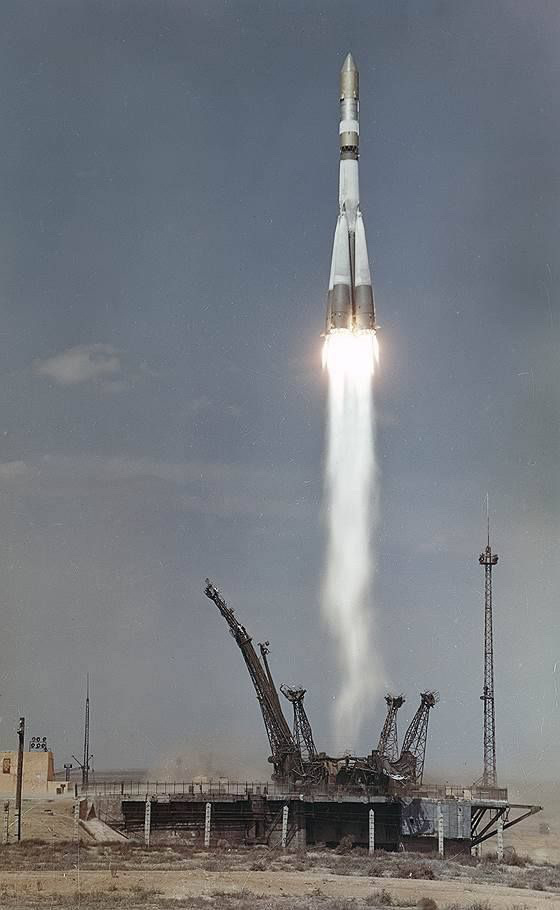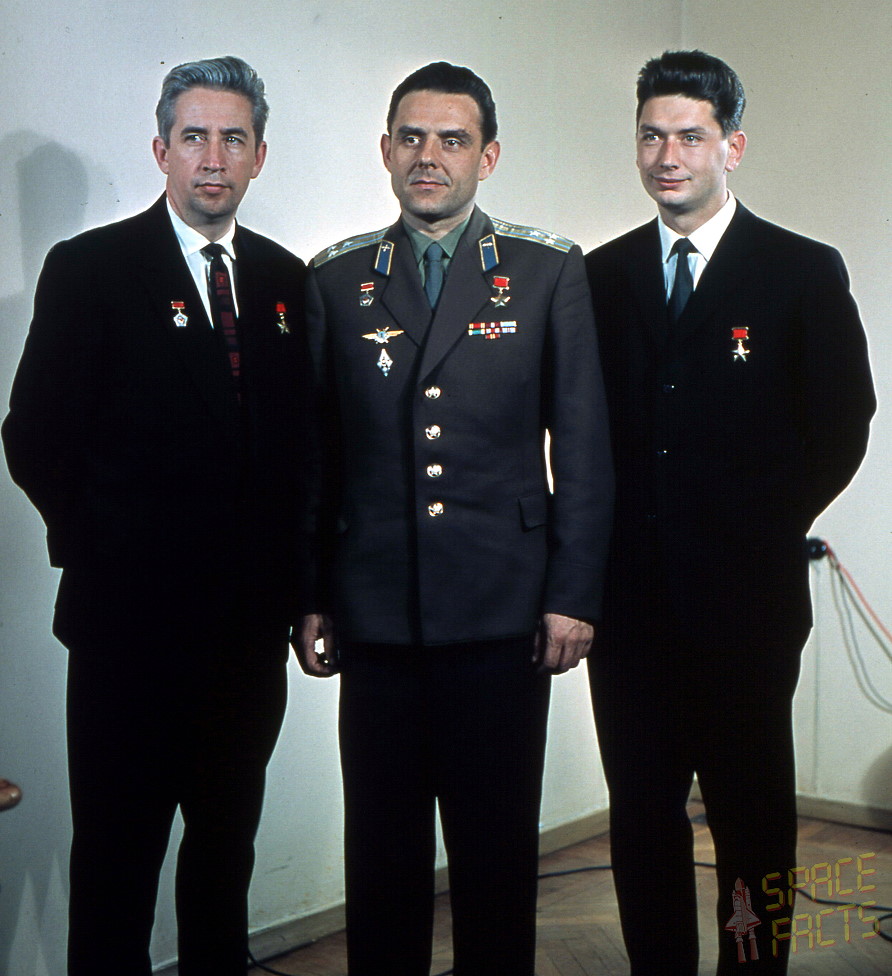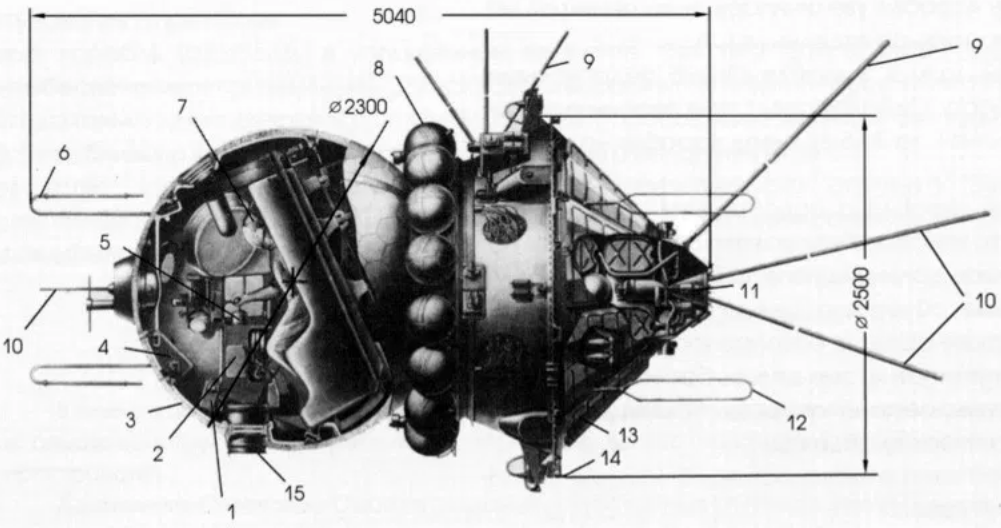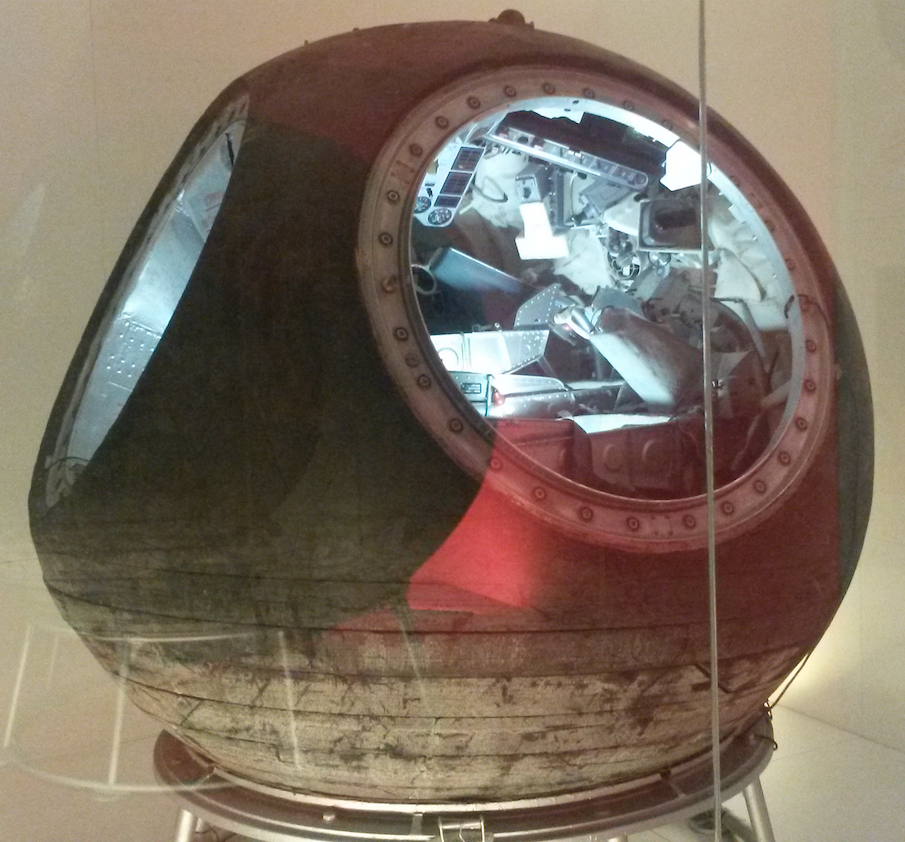
At 07:30:01 UTC, 12 October 1964, Voskhod-1 (Восход-1) is launched from Gagarin’s Start at the Baikonur Cosmodrome. On board the spacecraft are the command pilot, Colonel Vladimir Mikhailovich Komarov, with Konstantin Petrovich Feoktisov, an engineer, and Boris Borisovich Yegorov, a medical doctor.
The purpose of the mission was to investigate technical and physiological research.

After 16 orbits, Voskhod-1 returned to Earth at 07:48:03, 13 October 1964, landing approximately 65 miles (105 kilometers) southwest of Petropavl, capital of the North Kazakhstan Region, at N. 54° 02′ 00″, E. 68° 08′ 00″. Slowed by parachutes, the spacecraft’s landing was cushioned by solid rocket engines.
This was the first spaceflight to carry more than one human passenger.
Voskhod-1 was a specially modified Voskhod 3KV spacecraft. Designed to carry two cosmonauts, it was modified to carry three for this flight. As a result, there was no room for the cosmonauts to wear spacesuits. The spacecraft was 5.040 meters (16 feet, 6.4 inches) long, 2.500 meters (8 feet, 0.2 inches) in diameter, and had a mass of 5,320 kilograms (11,728.6 pounds).
The Voskhod-1 spacecraft is at the RRK Energia Museum, Korolev, Russia.

Voskhod-1 was launched by a Voskhod 11A57, number R15000-04. This was a two-stage liquid-fueled rocket with four “strap-on” boosters. The 11A57 was 30.84 meters (101 feet, 2.2 inches) tall with a diameter of 2.99 meters (9 feet, 9.7 inches), and had a gross mass of 298,400 kilograms (657,859 pounds). The first stage was powered by one RD-108-8D75K engine, producing 941.000 kilonewtons (211,545 pounds) of thrust, burning kerosene and liquid oxygen. It burned for 5 minutes, 1 second. The four RD-107-8D74K boosters each produced 995.300 kilonewtons (223,752 pounds) of thrust with kerosene and liquid oxygen. They burned for 1 minute, 59 seconds and were jettisoned. The second stage was powered by a single RD-108 engine, producing 294.000 kilonewtons (66,094 pounds) of thrust. It also burned kerosene and liquid oxygen. Its burn time was 4 minutes.
During this flight, the crew set three Fédération Aéronautique Internationale (FAI world records: maximum altitude in orbit, 408 kilometers (253.5 miles);¹ greatest mass to altitude, 5320 kilograms (11,728.6 pounds);² and duration, 24 hours, 17 minutes, 3 seconds.³
The Voskhod-1 spacecraft is at the RRK Energia Museum, Korolev, Russia.

¹ FAI Record File Number 9354,
² FAI Record File Number 9355
³ FAI Record File Number 9356
© 2023 Bryan R. Swopes